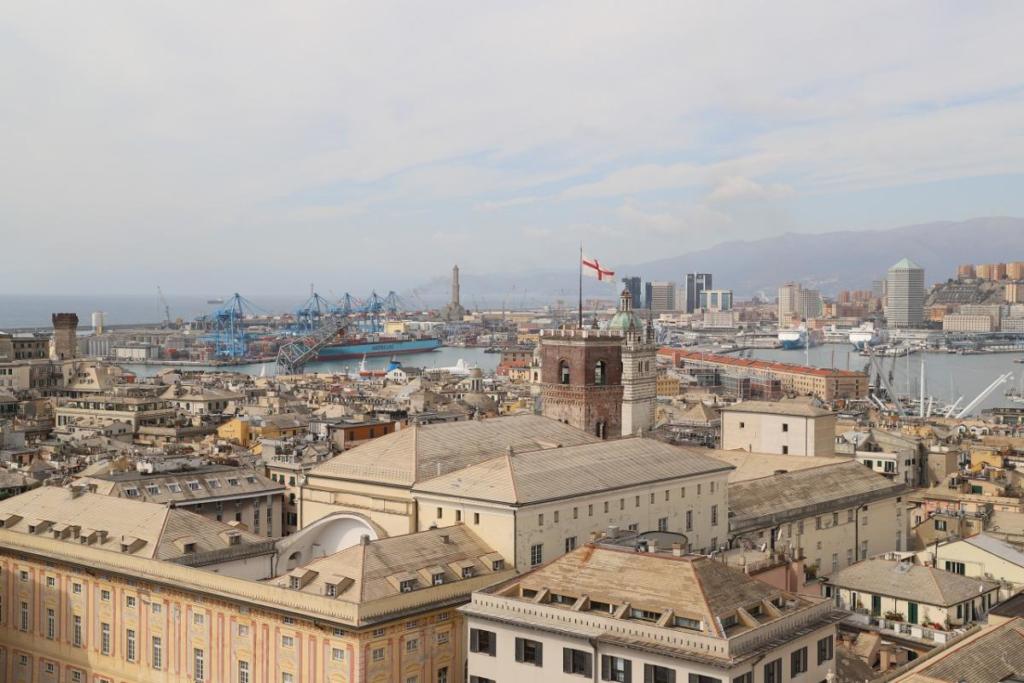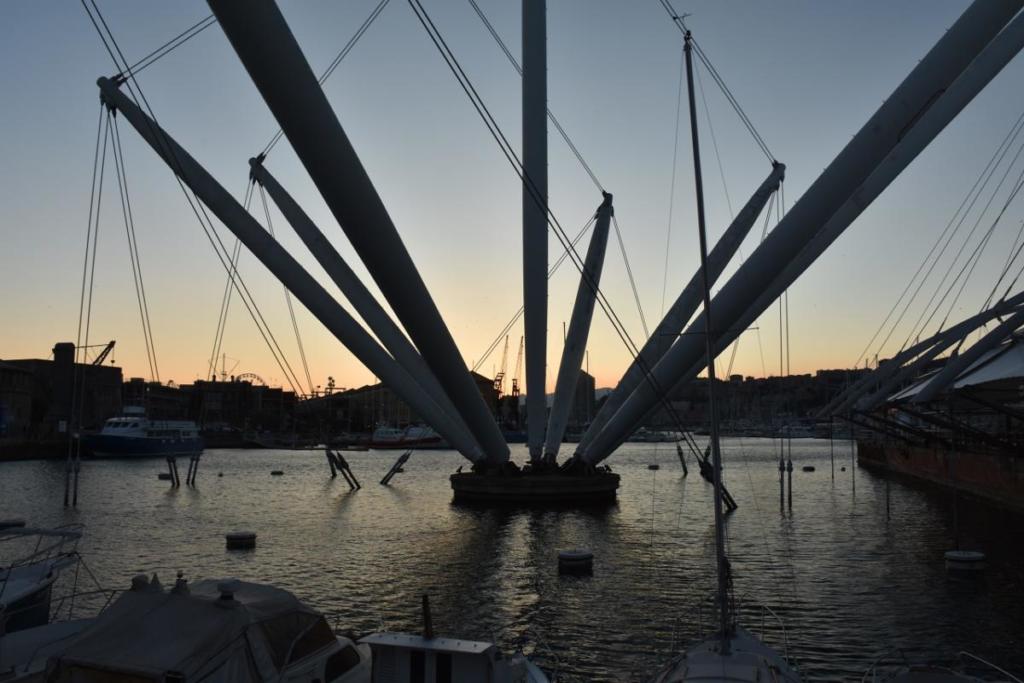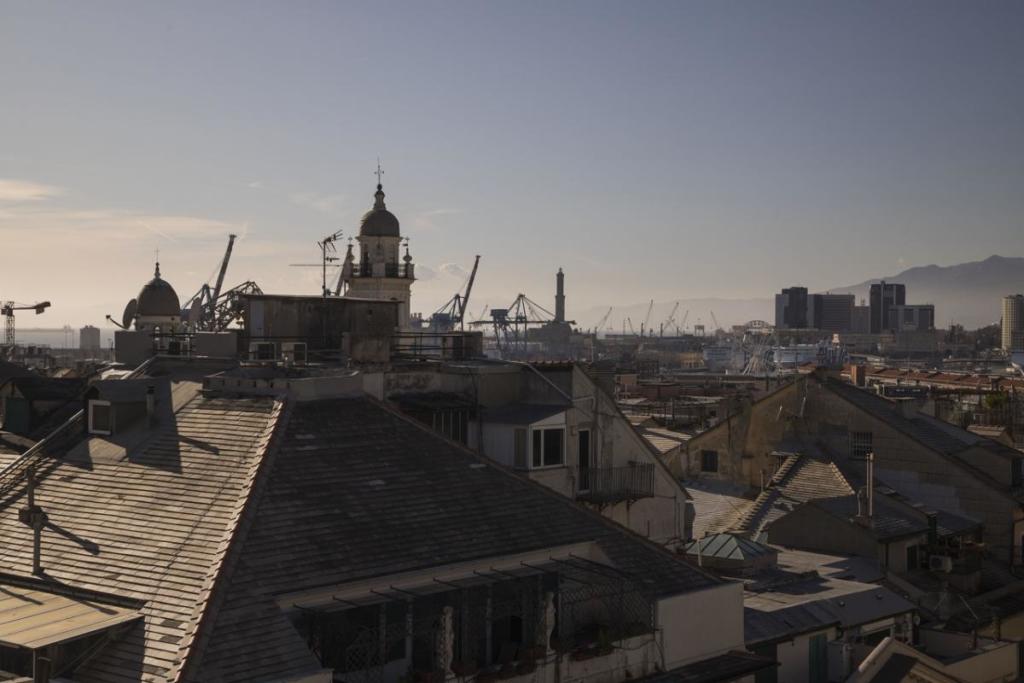When you view Genoa from anywhere up in the city you can see its characteristic bottleneck between the mountains and sea, but seen from Spianata Castelletto it is a place of breathtaking beauty.
[caption id="attachment_116216" align="center-block" width="750"] Genova by Paola Chiappini [/caption]
Genova by Paola Chiappini [/caption]
It is easy to advise tourists who only have a day or just a few hours to visit the city to take the "Castelletto Levante" liberty-style lift from Piazza Portello, an ascent of 57 meters, to get to the belvedere.
At the entrance of the same, the verses of Giorgio Caproni's poem "The lift" come back:
"When I have decided / to go to heaven / I will go with the elevator / to Castelletto".
The Spianata (Esplanade) is today a balcony over the city, but until 1849 there was the fortress of Castelletto, flattened, completely, by popular acclaim as it was considered a dangerous site in case of enemy occupation.
Today, the visitor's view from the city balcony is as far as the eye can see.
And so, it is easy to admire the historic centre, with the spires of the main churches on display: the Cathedral of San Lorenzo, the lower basilica of Santa Maria delle Vigne, the Commenda di Prè with the church of Saint John, Santa Maria di Castello , the deconsecrated church of Sant'Agostino.
But also you see the skyscrapers that describe a historical passage to the 20th century.
And among the dense network of alleys, how can your thoughts not pass to the songs of Fabrizio De Andrè who had drawn inspiration from here?
I look slightly away and see the beating heart of the city's activities: the port (the main one in Italy, and among the first in Europe) that is teeming with work, the terminal cranes ready to load and unload the large container ships, stationary on the piers inside the breakwater.
[caption id="attachment_116210" align="center-block" width="750"] Picture by Lucia d'Atri[/caption]
Picture by Lucia d'Atri[/caption]
Where the city has regained the spaces of the old port site, there is the Galata Museo del Mare which tells our storiesof mariners, shipyards, shipping companies and "scagni" (the traditional offices of the countless activities related to goods being imported and exported) and also traces the departure of ships full of migrants in the last century heading to a new world and new hopes.
And then a feeling cannot be missing by remembering Bruno Lauzi's interpretation of the traditional Genoese song "Ma se ghe pensu ...".
My gaze continues to rove from the east, rather to the residential districts of Albaro, Sturla, Quarto, Quinto and Nervi with Sant'Ilario, towards the complex of the Porto Antico, gradually running west, faltering suddenly at the Lantern, symbol of the city , whose lighthouse has traced the route for mariners arriving in the Ligurian city since 1128.
The contrast between the bustling network of alleys, enclosed between the Port and Via Garibaldi, below the Spianata, (once called Strada Nuova, home of the Rolli principals), and the infinity of the sea, is fantastic.
The Rolli, or the lists of splendid noble residences, are where the families competed to host high profile personalities in transit in Genoa.
[caption id="attachment_116207" align="center-block" width="750"] Genova by Paola Chiappini[/caption]
Genova by Paola Chiappini[/caption]
There are 114 buildings registered in the Genoese Rolli, of which 42 are included by UNESCO in the world heritage of humanity. But to visit them you need a longer stay in Genoa and a specific plan and schedule dedicated to them.
Before returning to the elevator to descend into the throbbing life of the city centre, take a fleeting glance at the departing "NaveBus", the public transport service that runs from the Porto Antico to the entire stretch of the port up to Pegli.
A public transport that is also a tourist service, just like the panorama from Spianata Castelletto.
A taste of Genoa, in this article, just like when you depart a city oven enjoying the traditional focaccia.
A taste, I said, useful to the tourist to intrigue them and make them come back to take the dozens of tours in a city that fully claims to be one of the main Italian tourist destinations.
An article is certainly not enough to tell the story of Genoa, nor is this the intention, but to start it was necessary to drop a few pills of artistic and natural beauty.







Follow us